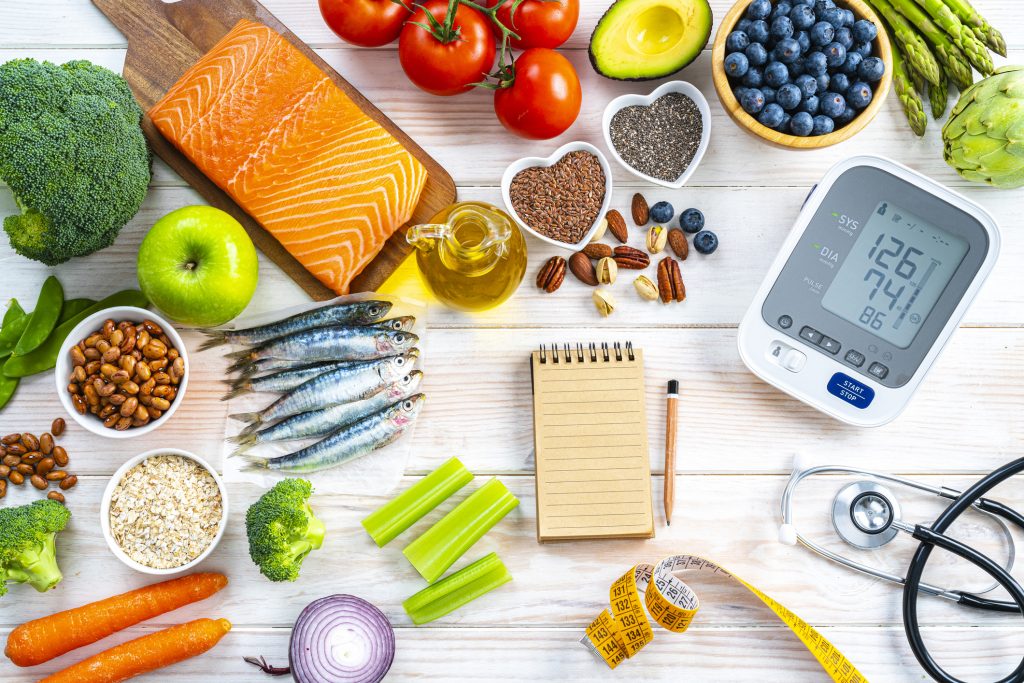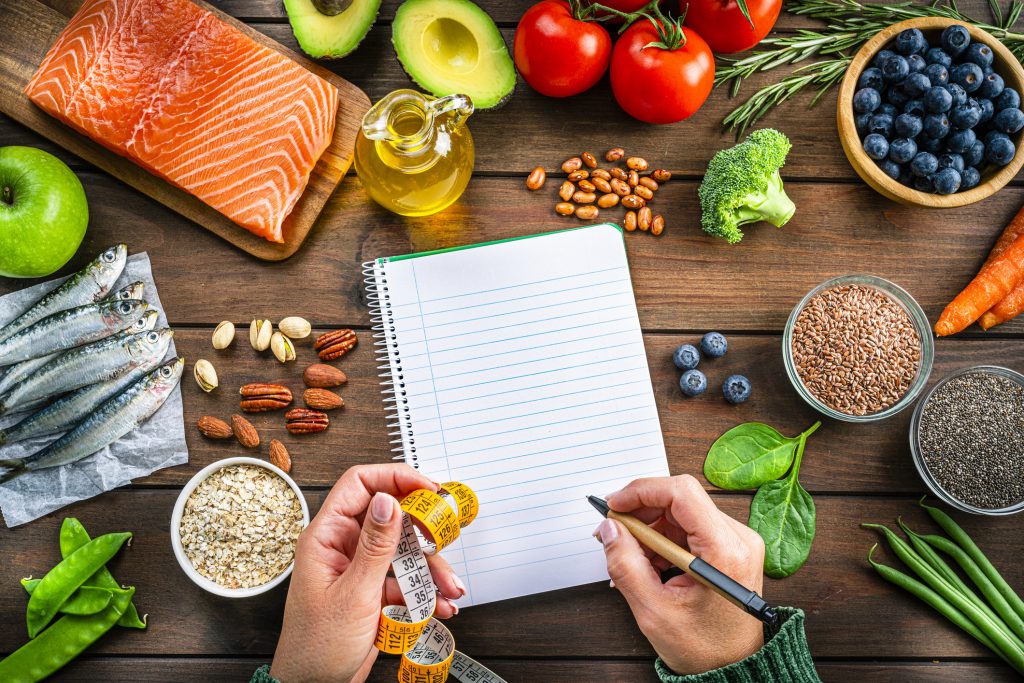Six Steps to a Healthier Diet in 2023


As sure as there will be another year, there will be New Year’s resolutions. They usually go something like this: Pay off all debt. Finally quit smoking. Shed those pesky 25 pounds that don’t seem to budge.
Despite the wide array of ways we can feel, look and live better, one thing rings true. Most of these resolutions are so extreme that they have very little staying power.
“People easily become discouraged when they set big goals because they are too overwhelming,” said Sarah Zangerle, registered dietitian at Froedtert & the Medical College of Wisconsin’s Comprehensive Weight Loss Center. “In order to keep the motivation going, it’s important to focus on small, achievable goals.”
In other words, baby steps.
Below are six steps to follow toward a healthier diet in 2023, each over a two-month period. How easy is that?
 January/February: Go meatless once a week
January/February: Go meatless once a week
The average American eats half a pound of meat per day. Research shows too much animal fat can increase your risk of diabetes and cancer – in addition to your waistline.
“Eating a vegetarian diet lowers your BMI (body mass index) and decreases your blood pressure and risk for many chronic diseases,” said Dee Gabbard a clinical dietitian at Aurora St. Luke’s Medical Center.
According to Meatless Monday, a nonprofit initiative of The Monday Campaigns, in association with the Johns Hopkins’ Bloomberg School of Public Health, going meatless just one day a week is enough to improve your health and the health of the planet.
To get these benefits, replace meat with other forms of protein, such as beans, lentils, tofu or low-fat dairy products at least one day a week.
For vegetarian recipes and other resources, visit www.MeatlessMonday.com.
March/April: Shake your salt habit
Sodium, also known as salt, is a necessary evil. Although our bodies need sodium to function properly, too much can cause high blood pressure, a marker for heart disease.
But hiding the salt shaker is only the tip of the iceberg. “More than 80 percent of the sodium we consume comes from restaurants and processed foods,” Gabbard said.
Many people should be getting only 1,500 milligrams of sodium, according to the latest dietary guidelines from the American Dietetic Association.
“The key is reading labels,” said Margaret Allen, registered dietitian at Columbia St. Mary’s.
To reduce sodium, buy fresh fruits and vegetables instead of canned, look for “low sodium” or “no added salt” versions of the foods you already buy and season foods with herbs and spices instead of salt.
“If you are going to salt your food, try tasting it first,” Allen said. “Many times you won’t even need to.”
For more tips, visit the American Heart Association’s website at Heart.org.
May/June: Think outside the box
Boxed and prepackaged foods have a lot going for them. They last forever (or seem to) and can be transported anywhere.
No, it’s not magic. Preservatives, artificial colors, partially hydrogenated oils, sodium and fillers are the stars in this case. It also goes without saying that potato chips, hot dogs and fruit snacks don’t have much going for them nutritionally, either.
To increase health content, start with easy substitutions. Gabbard suggests buying real cheese instead of processed cheese and fresh chicken, pork or beef instead of prepackaged deli meats.
“Try incorporating more fruits and vegetables,” said Brenda Kalchbrenner, registered dietitian at Wheaton Franciscan Healthcare. “If you are filling up on produce, automatically you’ll be consuming less unhealthy foods.”
July/August: Eat the rainbow
The U.S. Department of Agriculture’s MyPlate guidelines show Americans how to eat a balanced meal. Half the plate should be fruits and vegetables, a quarter lean proteins, another quarter whole grains and a serving of low-fat dairy on the side.
Eating a variety of fruits and vegetables – and a variety of colors – also will provide you with the most nutrients.
“If people could eat three colors a day, that would make a huge impact on their overall health,” said Allen. Your daily goal should be 2 cups of fruit and 2 1/2 cups of vegetables.
To reach that goal, start the day with a fruit-packed smoothie, reach for crunchy vegetables instead of chips for easy snacking or make grilled fruit kebabs for dessert.
For more healthful eating choices, visit www.ChooseMyPlate.gov.
September/October: Seek out superfoods
Simply put, superfoods give you more bang for your nutritional buck.
“These are foods that are packed with vitamins, minerals and phytochemicals – biologically active compounds that protect cells from damage that leads to aging, disease and cancer,” said Gabbard.
Here are some superfoods you can add to your diet:
Fatty fish such as salmon and sardines contain omega-3s. This can lower your heart disease risk and help arthritis.
Green tea contains antioxidants that have been shown to fight cancer.
Blueberries contain phytoflavinoids, antioxidants, potassium and vitamin C. They can lower your risk of heart disease and cancer.
Dark, leafy greens such as spinach and kale contain vitamin A, iron and omega-3s. They have been shown to lower the risk of cancer.
“When it comes to fruits and vegetables, pick vibrant colors,” Kalchbrenner said. “The deeper the color, the more nutrients it contains.”
Find more cancer-fighting foods at AICR.org (the website for the American Institute for Cancer Research).
November/December: Know your fats
Most people who grab fat-free versions of the foods they love think they are making healthier choices. Not so, says Kalchbrenner.
“We need some fat in our diet to absorb vitamins and keep us satisfied,” she said. “The key is eating the right kinds.”
Too much saturated and trans fats, like those found in beef, cheese and margarine, can raise your risk of heart disease by increasing cholesterol levels.
Instead, substitute these fats for heart-healthy polyunsaturated and monounsaturated fats, such as those found in fish, nuts, seeds and liquid vegetable oils. According to the American Heart Association, making the switch can actually lower cholesterol levels.
“Read the nutrition label,” said Kalchbrenner. “Steer clear of the words ‘hydrogenated’ or ‘partially hydrogenated.’ This is code for trans fats.”
(C) 2012 Mclatchy-Tribune News Service.. All Rights Reserved

